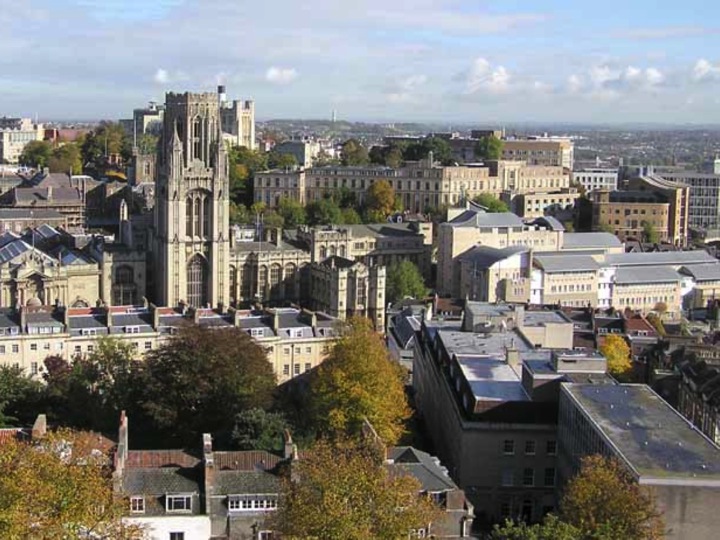Bristol / Main characteristics
Regional capital of the South West of England, Bristol is an attractive city famed for creativity, innovation and green dynamism.
Historically an inland port approached along the river Avon, from the 13th to 18th century Bristol was one of the 3 largest UK cities alongside London and York. A fine architectural heritage includes dramatic terraces overlooking the gorge and a collection of magnificent squares. Following the relocation of the working port to a more accessible coastal location, Bristol’s floating harbour became a popular leisure amenity supporting a thriving tourist trade.
The current population of 441 300 inhabitants makes Bristol the UK’s 8th most populous city.
Home to several major environmentally progressive organisations who have based their headquarters or main offices in Bristol, the list includes the Soil Association promoters of organic food, national cycling charity Sustrans, the Federation of City Farms & Community Gardens, the ethical bank Triodos and the regulatory Environment Agency.
The University of Bristol and the University of the West of England attract large numbers of students who swell the population by 35,638 in term time and contribute to a lively city. Many former students remain in Bristol and the 20 to 29 years age group, at 23% of the total population, is the largest in the city and has increased by almost 50% since 2001.
A cosmopolitan city, the black & ethnic minority population stands at 16% (ONS census 2011). Since 2001 there has been a significant increase in the number of international migrants coming to live in Bristol, particularly Somali communities and Polish residents finding work following the expansion of the EU.
The unemployment rate for Bristol ws 6.8% in June 2012 compared to a national 8.1% and a South West England rate of 6.2%. Bristols average earnings are £27,100 gross (ONS annual survey 2011) with Gross Domestic Household Income per capita for Bristol, £13,784 in 2010.
Housing is composed by 123 500 houses (66% of dwelling stock) and 62 550 flats (34% of dwelling stock). The most recent data available on household composition estimates that almost half of all households in Bristol are couple households, a third are one person households, 10% lone parent households and the remaining 10% other multi-person households. Future projections indicate that the number of couple households is likely to fall, whilst the number of one person households is likely to increase.
42.2% of residents have a degree or equivalent qualifications, helping to support the great diversity of businesses that make Bristol nationally and internationally such a prosperous city. Progress is being made to raise educational standards to enable more residents to benefit and to tackle the extreme poverty tht exists in some neighbourhoods.
Bristol’s prosperity is not shared equally by all its citizens. In 2008, it was estimated that around 21,900 (or 27%) children live in poverty in Bristol, 19,700 of these were aged under 16. These figures are not evenly distributed across Bristol. For example Lawrence Hill has 2,300 (almost 60%) of its children living in poverty, putting it in the bottom percentile of all wards nationally.
Key Business Sectors (more than 5% Gross Value Added) that are in order: Banking and Insurance, Professional Services, Health and Social Care, Education, Creative Industries, Leisure and Tourism. Key employment sectors (more than 5% employment) are in order: Health and Social Care, Education, Wholesale and Distribution, Retail, Professional Services, Leisure and Tourism, Banking and Insurance, Public Administration and Defence.
The current share of jobs along the food chain is an estimated 10%.
